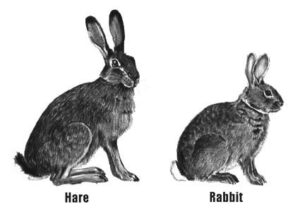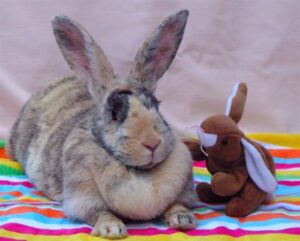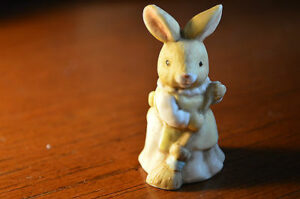We all know that rabbit ears are iconic, anyone can identify a rabbit with just a glimpse of their ears. But have you ever wondered why do pet rabbits have long ears?
That is exactly the question that came to my mind and even though I have had pet rabbits for years, I did not really know the reason why rabbits have such long ears. So I did a bit of research and here is what I found out!
Rabbit ears serve many roles, from hearing sounds that are inaudible for us to keeping their bodies cool during the summer. Rabbit ears are fine tuned to help rabbits survive in their environment whether it is wild or domestic rabbits. Learn more about rabbit ears below!
It Gives Them Incredible Hearing
Rabbits have an amazing sense of hearing, their long ears can hear sounds ranging from 360 hertz to 42,000 hertz which is almost double that of human ears which can only detect sounds within 64 hertz to 23000 herts.
To put that in perspective, rabbits can hear sounds that are much higher pitched than humans, this helps them detect the faintest of sounds like a predators foot steps through the shrubs and even the movements of other rabbits within their vast underground burrows.
Most rabbits can freely move their ears around which helps them capture sound coming from all around them and not just the front. Rabbit ears can detect sound from over two miles away.
Anatomy Of A Rabbit's Ear
A rabbit’s ear is quite complex, it is divided into three distinct parts, the outer ear, the middle ear and the inner ear.

The different parts of the ear work together to not only help rabbits hear but to regulate body temperature, help them balance and even communicate.
Rabbit ears are a vital part of a rabbit’s body, that is why we should never pickup or hurt a rabbits ears. Injured or infected ears can seriously affect a rabbit’s quality of life.
It Helps Them Cool Down
Rabbits ears are the only way that rabbits can regulate their body temperature. Rabbits have a normal body temperature of around 98” F. (36.6′ C.) to 102′ F. (38.9′ C.).
Heat Stroke from overheating and Hypothermia from being too cold can be a serious problem for rabbits. To protect themselves, rabbits have developed thick fur that can keep the cold away and long ears which can effectively get rid of excess body heat.
The longs ears have a complex network of blood vessels that carry heat out of their body and release it into the air, effectively cooling their bodies down.
As rabbits can produce any sweat like us humans, their ears are the only way rabbits can protect themselves from overheating and suffering from a heat stroke, especially during the summer months in hotter climates.
Overheating Or Hypothermia In Rabbits
Overheating or Hypothermia can be a serious problem in rabbits that can even lead to death.

Rabbits with thicker fur or small ears may not be able to effectively regulate their body temperature so it is important for rabbit owners to quickly identify signs of a Heat Stroke or Hypothermia before it becomes serious enough to require medical attention.
Here are some common signs of overheating and hypothermia in rabbits
Symptoms Overheating Or Heat Stroke In Rabbits
- Rabbit’s ears and feet are hot to the touch
- Fast breathing often with their mouth open
- Rabbit is dull and responses are slow
- They are refusing to eat or drink
What To Do If A Rabbit Is Overheating Or Suffering From A Heat Stroke
- Move the bunny to a cool and well ventilated area
- Rub cool water on their ears
- Place a cold water bottle next to them
Symptoms Of Hypothermia In Rabbits
- Limbs and ears feel cold to the touch
- Breathing and heart rate slows down
- The Rabbit feels lethargic and um-responsive
- Rabbit’s lips and paws turning gray or blue
What To Do If A Rabbit Is Suffering From Hypothermia
- Warm the rabbit to raise it’s body temperature slowly
- Apply a warm water bottle, Heating blanket or warmed towel
- Keep them away from any wind or water
Above all try to keep your rabbits indoors, shelter them from the elements and get in touch with your vet in case you suspect that your rabbit is suffering from overheating or hypothermia.
It Is Used To Communicate
Rabbit ears serve another big role, it helps them communicate with other rabbits as well as us humans. Since rabbits are voiceless animals, which means that they do not produce any sound, they use body language and gestures to interact with others in their environment.
Rabbits are highly social animals and live in large groups of ten or more rabbits in the wild. They often alert each other of danger or give social signals with their ears.
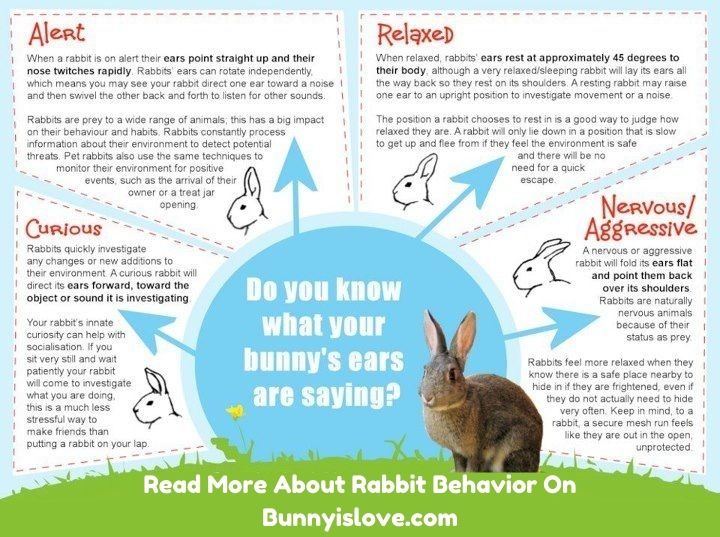
Domestic rabbits can also show various emotions with their ear position which can be incredibly helpful in understating rabbit behavior. Understanding what different ear positions mean can also heal rabbit owners learn about their rabbit’s health and mood.
Common Rabbit Ear Positions And Their Meanings
Curious – Rabbits are inherently curious animals, they love to explore their surroundings and interacting with objects and people in their environment. A curious rabbit will have its ears forward and its head sticking out. They may also bod their head back and forth in order to get a better look at whatever they are looking at.
Alert – An alert rabbit will have their ears pointing straight up along with open eyes and often looking or standing up to check up on their surroundings. Rabbits are prey animals, excellent hearing sense, and remaining alert help them survive in the wild.
Relaxed – When a rabbit is resting or relaxed their ears will often point back at a 45-degree angle or just lay flat on the back. If you find your rabbit in this pose then it means that it is quite happy and feels safe in its environment.
Nervous – When nervous or fearful, rabbits will move their ears back to their body but keep them open and remain alert. You will often see this rabbit behavior when they are in a new environment or interacting with someone they do not recognize.
Half & Half – This is when rabbits have one of their ear raised in an alert or curious stance while the other is perfectly relaxed, laying back over their shoulder. Rabbits often do this when they hear something which piques their interest but not enough to investigate at the momenet.
It Can Be Used To Identify Breeds
Some rabbits have long ears, some rabbits have short, and some rabbit have lop ears. The shape and size of a rabbit ear is determined by its breed. This make rabbit ears a good way to distinguish between different rabbit breeds.
The American Rabbit Breeder’s Association (ARBA) as well as the British Rabbit Council (BRC) has set up several guidelines to identify different rabbit breeds by the shape of their ears. Some of the major ear types in rabbits are as follows.
Rabbit Breeds With Long Ears
Long and upright eared rabbits breeds are some of the most common breeds around the world. All rabbit breeds have originated from European rabbits which have medium to long ears that stay upright. Some of the breeds with this type of ears found today are
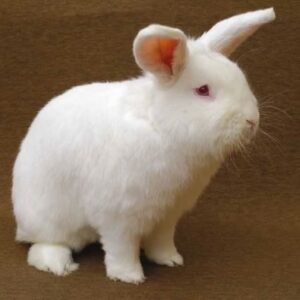
New Zealand Rabbit
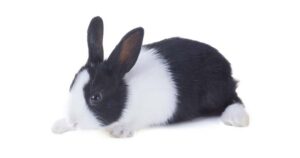
Dutch Rabbit
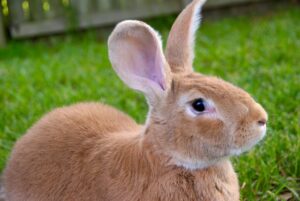
Flemish Giant Rabbit
Rabbit Breeds With Short Ears
Rabbit breeds with shorter ears are getting more and more popular these days, smaller rabbits often have short tiny ears . Short eared breeds are often dwarf breeds that have been bred for their smaller size and physical characteristics. Some of the most common breeds with short ears are
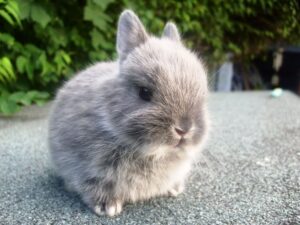
Netherland Dwarf
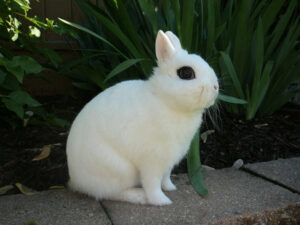
Dwarf Hotot
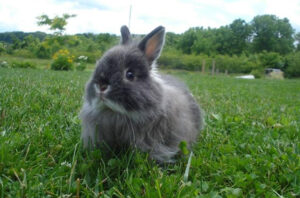
Jersey Wooly
Rabbit Breeds With Lop Ears
Lop ears are the rabbit ears that are floppy and hang from their head like a basset hound. These breeds are incredibly popular as house pets due to their unique look. Some of common rabbit breeds with lop ears are
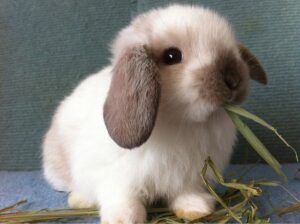
Holland Lop
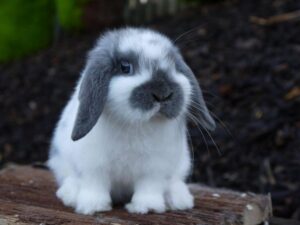
Mini Lop

French Lop
Problems With Long Rabbit Ears
Even though most rabbits have long ears they are quite susceptible to ear disease. Rabbits can have problem in their inner ear, middle ear or outer ear.
Ear diseases can be quite dangerous in rabbits causing chronic itching, pain, loss of hearing, wax build up, head tilt and in some severe cases, death.
That being said the most common type of ear problem in rabbits is an Ear mite infection also known as Canker. It is caused by a parasite called Psoroptes cuniculiis.
Ear mite infection can turn the skin on a rabbit’s ear scaly which eventually thickens to form crusts that rupture and cause bleeding and pain.
The problem is compunded with serious itching which can cause even more bleeding and pain in the long run.
But ear mite infections are not deadly and can be easily treated at home or with a visit to a vet.
To learn more about ear mite infection or canker in rabbits check out Infestation of Mites in the Ear in Rabbits.
Closing Thoughts On Why Rabbits Have Long Ears
I hope that now you have a good understanding of why rabbits have long ears and how they use their ears. If you are looking to learn a bit more about rabbits then check out some of our other articles on them.
- Top 10 Best Breed Of Rabbit For First Time Owners
- Rabbit vs Bunny vs Hare – What Is The Difference Between Them?
- The Ultimate New Rabbit Checklist For Bunny Beginners
- Rabbit Behavior & Body Language Cheat Sheet For Beginners
Remember to share this post with your friends and you can reach out to me on our social media with any questions or feedback. See you next time!

Catagories
- New To Rabbits (16)
- Rabbit Behavior (9)
- Rabbit Care (18)
- Rabbit Diet (12)
- Rabbit Facts (10)
